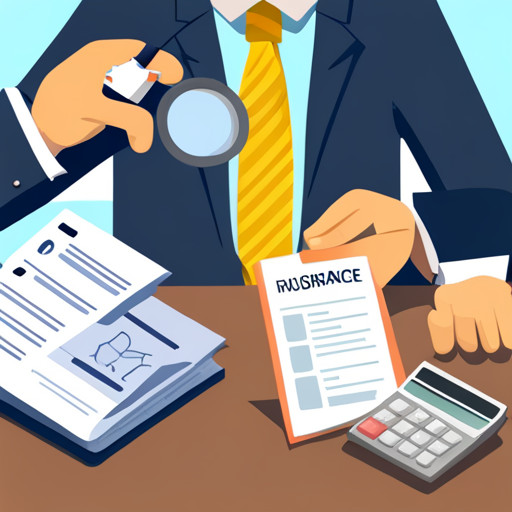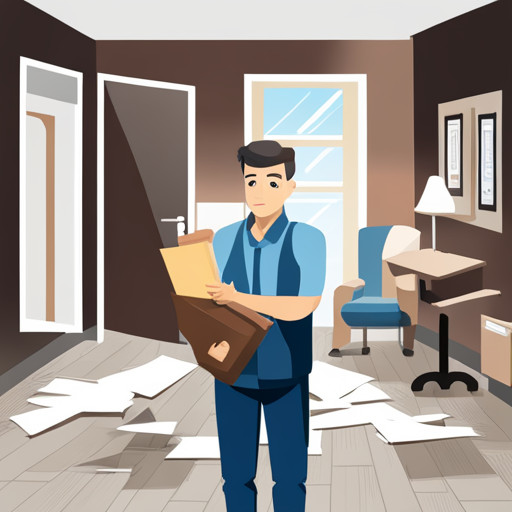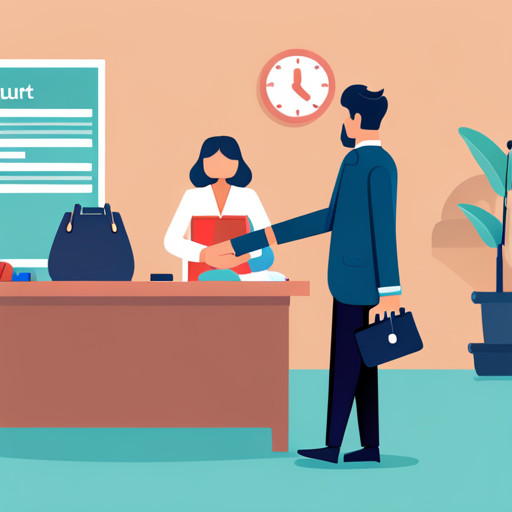Personal Property Damage Claims Get Compensation for Your Broken Items
What recourse exists when personal belongings suffer damage due to unforeseen events?

This article explores the intricacies of personal property damage claims. It navigates the role of insurance, the steps in claim filing, and the process of pursuing a lawsuit.
The piece also delves into compensation calculation, handling claim denials, and tips for maximizing compensation.
A comprehensive understanding of these facets aids in adequately addressing property damage and securing rightful compensation.
Key Takeaways
- Personal property damage can be covered by homeowners insurance or renters insurance.
- Valuable collections, fine jewelry, and firearms may require separate coverage.
- Insurance policies outline covered occurrences or perils that lead to property damage.
- Promptly notifying the responsible party and preserving evidence is crucial for insurance coverage.
Understanding Personal Property Damage

Understanding personal property damage involves recognizing it as harm to items such as clothing, electronics, furniture, and jewelry. This damage can occur both inside and outside the home due to covered occurrences including fire, smoke, windstorm, vandalism, theft, and water leaks.
Examination of common causes reveals that such incidents often result from unforeseen or accidental events. Insurance coverage for personal property damage typically falls under the purview of homeowners or renters insurance policies. However, it is crucial to note that these policies may have certain exclusions and may not cover all types of damage.
Valuable items often require additional coverage. Understanding the specifics of one's insurance policy is crucial in ensuring sufficient protection and coverage for personal property damage.
The Role of Insurance in Personal Property Damage

In the context of loss or harm to possessions, insurance plays a pivotal role in providing financial recovery for the affected individuals. Insurance coverage can be viewed as a safety net against unforeseen types of property damage. It is crucial to understand the specifics of one's policy to ensure the proper coverage is in place. This includes recognizing exclusions and limitations to avoid unexpected out-of-pocket expenses.
Various types of property damage, such as fire, theft, vandalism, and water leaks, are typically covered under standard policies. However, certain damages, like those caused by floods or earthquakes, may not be covered unless additional coverage is purchased.
Handling Personal Property Damage at Work

Workplace environments can pose various risks leading to the destruction or loss of employees' belongings, necessitating a clear comprehension of the procedures for addressing such incidents. This understanding is crucial for ensuring property damage reimbursement and mitigating workplace liability.
Understanding the specific policies within one's workplace regarding personal property damage is essential. Preservation of any evidence related to the damage can aid in receiving compensation. Prompt reporting of the incident to the employer and, if necessary, local authorities is vital.
These steps, coupled with knowledge about the liability of the workplace and the rights of the employee, ensure that damages are adequately addressed and that responsible parties are held accountable. This ultimately promotes a safer and more secure working environment.
The Initial Steps for Filing a Property Damage Claim

Commencing the process of filing a claim for loss or destruction of assets necessitates identifying the cause, preserving evidence, and accurately estimating the value of the affected items. Documenting the property damage involves detailed data gathering, including photographs and receipts, to establish the extent and monetary value of the loss. Common causes of personal property damage, such as natural disasters, theft, or accidents, need to be properly substantiated for insurance claim purposes.
| Steps for Documenting Property Damage | Common Causes of Personal Property Damage |
|---|---|
| Identifying the cause | Natural disasters |
| Preserving evidence | Theft |
| Estimating value of items | Accidents |
This diligent process ensures a fair evaluation of the claim, paving the way for possible compensation.
How to Document Your Property Damage
Thorough documentation of the impacted assets, including photographs, receipts, and a detailed log of the incident, plays a pivotal role in the claims process. This process, known as documenting property damage, is crucial in providing the necessary evidence to support a claim.
- Detailed, time-stamped photographs of the damage can capture the extent and nature of the loss.
- Receipts and records of purchase verify ownership and provide a basis for valuation.
- A comprehensive log detailing the circumstances of the incident reinforces the validity of the claim.
The importance of evidence in such instances cannot be overstated. It substantiates the claim, aids in the accurate assessment of loss, and ensures a fair settlement. The aforementioned components collectively form an indispensable part of an effective claim strategy.
Working With Insurance Companies: a Guide

Navigating the intricacies of insurance company processes requires an understanding of their operational mechanisms and claim procedures. It is essential to comprehend the filing deadlines to avoid missing the opportunity to claim compensation.
Deadlines can vary depending on the type of claim; hence, it is crucial to verify these with the relevant insurance company. Moreover, insurance companies require specific evidence to substantiate claims. This can include photographs, repair estimates, and receipts for damaged items. Therefore, understanding evidence requirements is crucial to ensure a successful claim.
Furthermore, effective communication with insurance adjusters can aid in expeditious claim processing. Ultimately, obtaining a comprehensive understanding of insurance company procedures can facilitate smoother personal property damage claims.
Negotiating Your Property Damage Claim

Negotiating an insurance settlement involves a series of strategic steps, starting with a comprehensive assessment of the loss incurred and culminating in a mutually agreed upon resolution between the involved parties. This process requires detailed evidence collection to substantiate the claim. A meticulous examination of damaged items, thorough documentation including photographs or videos, and collection of repair or replacement estimates stand as crucial elements of this process.
Effective negotiations necessitate a solid understanding of insurance policy terms and coverage limits. Persistence in presenting a well-substantiated claim can lead to a satisfactory settlement. Legal advice may be required if the negotiation reaches an impasse.
When to Seek Legal Assistance for Property Damage Claims

In situations where negotiations with the insurance company reach a stalemate, seeking the expertise of a legal professional can be a viable course of action. Understanding the legal process for property damage claims can be a complex task, thus, professional guidance is often necessary.
Legal professionals can provide a comprehensive review of the insurance policy, identify exclusions or limitations, and assist in gathering substantial evidence to support the claim. Legal counsel can also facilitate effective communication with the insurance adjuster, ensuring that claimants' rights are protected.
Seeking legal advice for property damage claims can indeed optimize the potential for a favorable outcome, particularly when disputes over the claim's value arise, or when the insurance company is suspected of acting in bad faith.
The Role of Small Claims Court in Property Damage Cases

Small claims court serves as an accessible avenue for resolving disputes related to the cost of replacement or repair in instances of property loss or damage. Understanding the small claims court process is fundamental to successfully presenting one's case. Typically, this process involves filing a claim, serving the defendant, preparing for trial, and presenting the case. Although the process appears straightforward, complexities may arise necessitating the need for legal representation in small claims court.
The prospect of facing a defendant in court can cause anxiety, particularly when unfamiliar with legal procedures.
The disappointment of an unfavorable judgment can be distressing.
The relief of a successful claim can provide a sense of justice and closure.
The Process of Filing a Lawsuit for Property Damage

Filing a lawsuit for property loss or destruction involves a series of steps, starting with the identification of the responsible party and the collection of compelling evidence. The filing process includes the preparation of a detailed complaint outlining the circumstances and extent of the property damage. This is followed by the service of the complaint to the defendant and awaiting their response. The plaintiff may then explore various legal options such as negotiation, mediation, or proceeding to trial.
| Steps in Filing a Lawsuit | Description |
| Identification of Responsible Party | Determine who is legally liable |
| Collection of Evidence | Gather proof of property damage |
| Preparation of Complaint | Detail the circumstances and extent of damage |
| Service of Complaint | Deliver the complaint to the defendant |
| Exploration of Legal Options | Consider negotiation, mediation or trial |
Understanding these steps can assist individuals in navigating the often complex legal terrain of property damage lawsuits.
Compensation Calculation: Replacement Value Vs. Actual Cash Value

Determining the worth of lost or damaged possessions involves two major methods: replacement value and actual cash value. The replacement value refers to the amount needed to replace the item with a new one of similar kind and quality, without considering depreciation. Conversely, actual cash value is the replacement cost, less depreciation.
Factors to consider when determining the value of damaged personal property include:
- The age and condition of the item before the damage occurred
- The cost to repair the item
- The cost to replace the item with a similar one
Both methods of calculating compensation for personal property damage have their merits and drawbacks. Therefore, the choice between replacement value and actual cash value will depend on the specifics of the situation and the policyholder's preferences.
How to Handle Denial of Property Damage Claims

Addressing the denial of insurance coverage for lost or destroyed possessions requires a comprehensive understanding of the policy terms and conditions. A property damage claim denial can be a complex issue, often resulting from misunderstandings or discrepancies in coverage. To overcome such instances, an appeal process is typically available.
Appealing denied property claims necessitates a thorough review of the policy and a clear presentation of supporting evidence. It is crucial to ensure that the claim lies within the ambit of the policy's covered perils and that the damage is not attributed to exclusions.
In instances where the denial persists despite valid coverage and evidence, professional legal consultation may be sought to resolve the impasse. It is essential to navigate this process with diligence, accuracy, and assertiveness.
Tips to Maximize Your Property Damage Compensation

Navigating the path of denial in property damage claims can indeed be challenging. As the discourse progresses towards the current subtopic: 'Tips to Maximize Your Property Damage Compensation', the focus will be on providing actionable insights on maximizing compensation and the significance of evidence collection.
- Understanding the intricate details of the insurance policy maximizes the chances of receiving appropriate compensation.
- Regular updates to the inventory of personal belongings and their current value can ensure a comprehensive claim.
- Meticulous evidence collection, including photographs, receipts, and reports, is critical for substantiating claims.
Through these practices, claimants can better position themselves to negotiate effectively with insurance companies, thereby maximizing their compensation. These strategies underscore the importance of preparedness and attention to detail in the claims process.
Frequently Asked Questions
What Types of Personal Property Are Most Commonly Damaged and Claimed for in Insurance?
Commonly damaged personal property items claimed in insurance often include electronics, furniture, and jewelry.
The roles of insurance companies involve assessing the damage through various techniques, determining the cost of repair or replacement under the policy's terms.
This process may require professional appraisals, photographic evidence, or even forensic analyses in cases of fire or other extensive damage.
The claim's success often depends on accurate damage assessment and the provision of sufficient supporting documentation.
Are There Any Specific Preventative Measures One Can Take to Avoid Common Types of Personal Property Damage?
Emphasizing the importance of preventative maintenance, it becomes clear that routine checks and repairs of home systems can mitigate common types of personal property damage.
Furthermore, the implementation of home safety measures such as smoke detectors, burglar alarms, and regular equipment inspections could notably reduce the incidence of property damage.
Hence, these strategies not only safeguard valuable personal property but also potentially decrease the frequency and cost of insurance claims.
How Long Does the Typical Process of Filing and Settling a Property Damage Claim Take?
The process duration for filing and settling a property damage claim is contingent on several factors. Documentation of the claim, including gathering necessary evidence and evaluations for damaged items, is a time-consuming process.
Following submission, the insurance company's investigation and assessment of the claim can also extend the timeline. Settlement negotiations between the claimant and the insurer can further lengthen the process.
Therefore, the entire process can range from a few weeks to several months.
Are There Any Tax Implications When Receiving Compensation for Personal Property Damage?
Tax implications may arise when receiving compensation for personal property damage. Generally, compensation received is not taxable if it does not exceed the cost of the damaged property. However, if compensation surpasses the property's cost basis, the excess could be subject to capital gains tax.
Moreover, Tax Deduction Limitations exist; casualty losses are only deductible if they are attributed to a federally declared disaster. This illustrates the importance of understanding tax implications when receiving compensation for personal property damage.
Can I Use a Public Adjuster to Help With My Personal Property Damage Claim?
Engaging a public adjuster for personal property damage claims can offer several benefits. These licensed professionals advocate for claimants, facilitate claim processes, and negotiate with insurance companies to maximize compensation.
However, selection of a public adjuster should be guided by criteria such as experience, reputation, and familiarity with specific types of claims. It's crucial to verify their licensing status and consult previous clients to ensure professional and satisfactory service.

This post has been generated by AI and was not reviewed by editors. This is Not legal advice. Please consult with an attorney.




